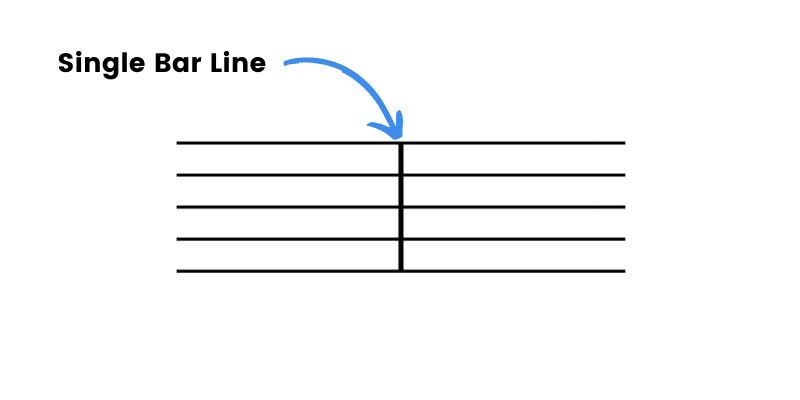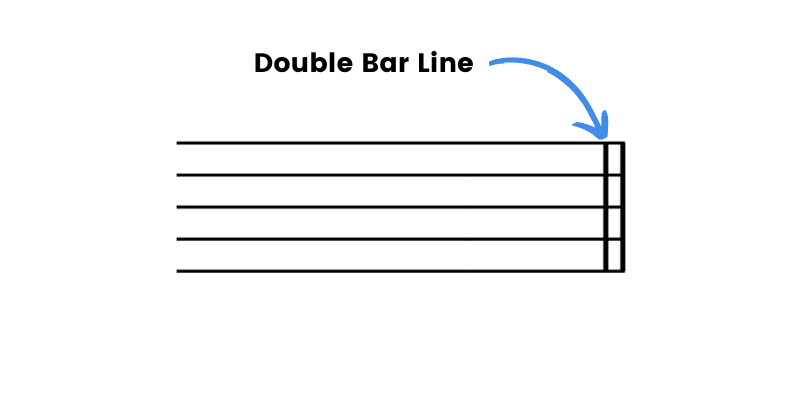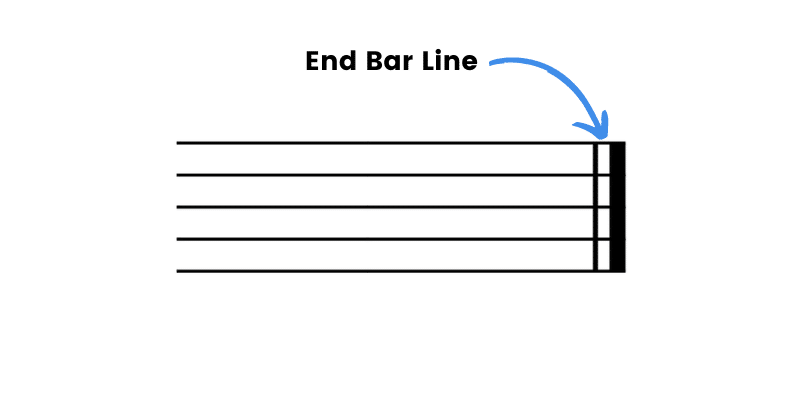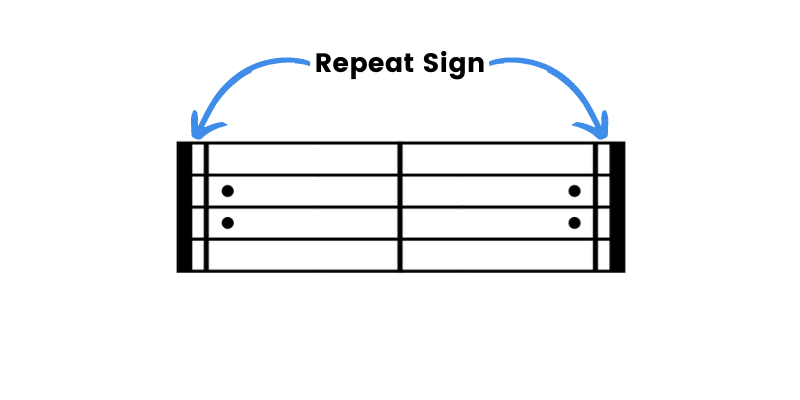When reading music, you’ll encounter four different types of bar lines. And while all of them help divide up the music, each one means a different thing.
The four different types are:
- Single Bar Line
- Double Bar Line
- End Bar Line
- Repeat Sign
Let’s get into them.
Quick Definition
Bar lines are the vertical lines that separate measures of music. Each type of bar line tells you something about where you are in the music – whether it’s the end of a measure, the end of a section, a repeated section, or the end of the piece.
Single Bar Line

Single Bar Lines are the most common type of bar line found between each measure of music.
They help us divide up notes to make them easier to read.
A single bar line is written as a thin vertical line that goes from the top line of the staff to the bottom.
You can use them as a reference to count measures or find the measure you are looking for within a piece of music.
Double Bar Line

A Double Bar Line indicates the end of a section in a piece of music.
You’ll often see this kind of bar line before a change in the key signature, tempo, time signature, or mood.
A double bar line is written as two thin vertical lines (that are the same thickness) next to each other.
End Bar Line

Next, we have an End Bar Line, which indicates the very end of a movement or piece.
When you reach an end bar line, you can stop playing or take a break before starting the next movement.
An end bar line looks like a double bar line, but the second line is a lot thicker than the first.
Repeat Sign

Sometimes a composer will want to repeat a section of music. Rather than writing out all the notes again, they can use a Repeat Sign which tells the musician to repeat what they’ve just played.
It’s written as an end bar line, but with two dots on either side of the middle line of the staff.
- A repeat sign with the dots facing left is an end repeat.
- A repeat sign with the dots facing right is a start repeat.
When you see an end repeat sign, you should go back to the previous start repeat sign and play the section again from there.
If there is no start repeat sign before it, you should play the section again from the beginning of the movement or piece.
Why are Bar Lines Important?
Besides being crucial to reading sheet music, knowing the different kinds of bar lines will also help you structure your own practice and communicate with other musicians.
For example, you can use the double bar lines to help you decide on a section of music to practice, since it indicates big changes in the music.
This vocabulary also makes it easier to explain your ideas to other musicians. During a rehearsal, you can say, “Let’s start at measure 7!” or “Can we play softer in the first repeated section?”
This is a clear way to communicate where you are referring to in the music.
Summing Up
Now you have the tools to identify the different types of bar lines and apply this knowledge to your musical practice.
If you have any questions, feel free to reach out and I’ll get back to you as soon as possible.




